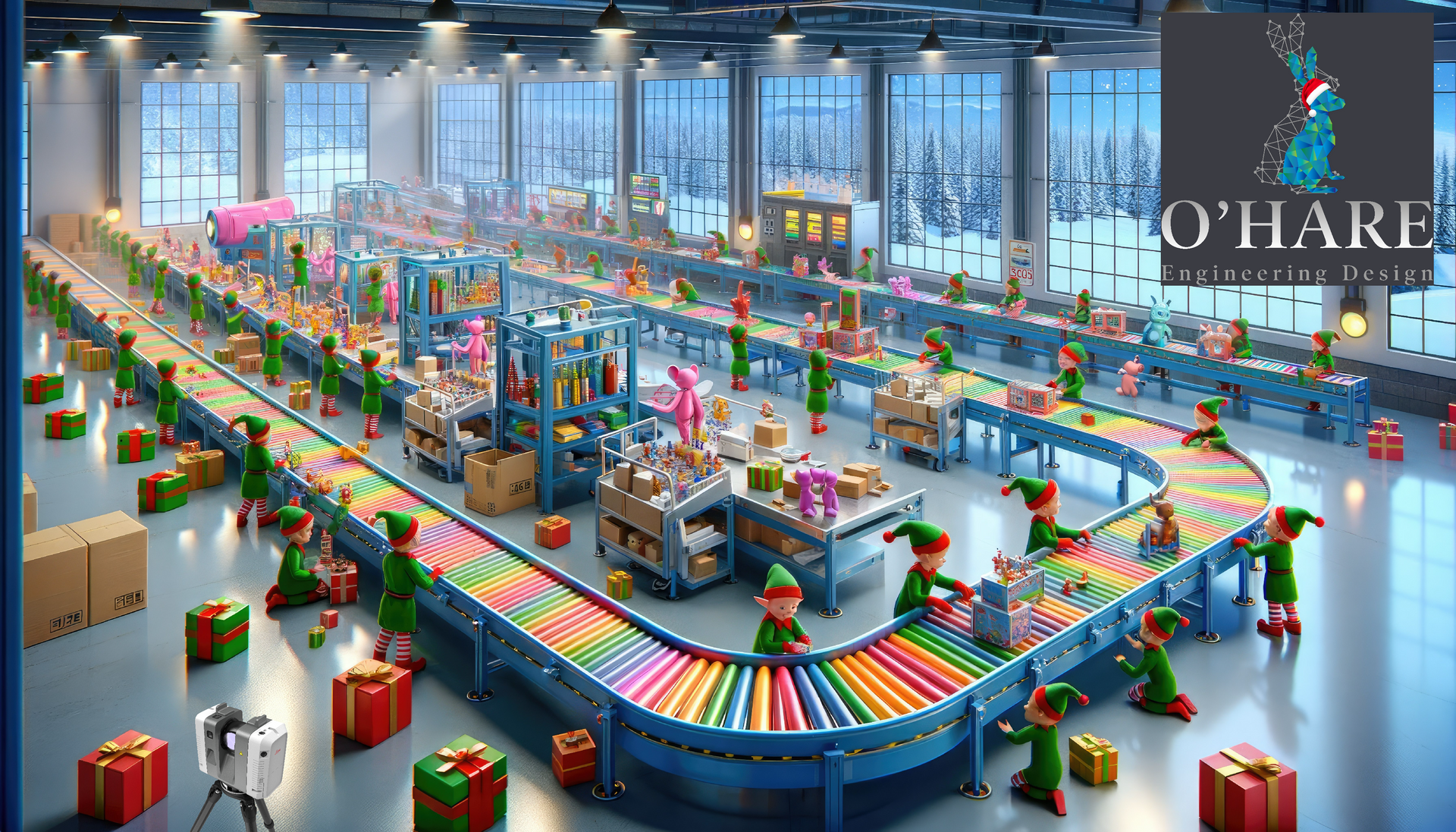A Workshop in Need of Optimisation

A Workshop in Need of Optimisation
Date: 14th December 2023
As Christmas Day approaches, children worldwide eagerly await the arrival of Santa and his sleigh overflowing with presents. But behind Santa and his reindeer, lies a hidden world of innovation and engineering: Santa's Workshop.
Every December, the elves at Santa's Workshop enter a state of frenzied activity. With an estimated 2.2 billion children eagerly awaiting their gifts, the pressure is on to finish building and wrapping an astonishing 6,043,956 toys every single day!
To put that into perspective;
According to their LinkedIn profile, Hovis bake and deliver around 1.3 million loaves of bread per day.- Nestle produces around 4.5 million KitKats per day.
- And Lego produces around 164 million bricks per day which, on average, comes to about 600,000 sets per day.
So, what Santa and his elves are doing is no mean feat! And that’s assuming that every child in the world only gets 1 present per year in their stockings.
A Workshop in Need of Optimisation
Even Santa's Workshop - the absolute hub of Christmas magic that it is - isn’t immune to the wear and tear of time. Over the years, machinery will need to be repaired and replaced, production lines will need upgrades to integrate new technologies, and the workshop itself could potentially need to expand to meet growing demand for billions of presents every year.
In recent years, 3D laser scanning and mechanical design have emerged as powerful tools for optimising industrial processes and enhancing the efficiency of manufacturing facilities. In addition to the magic, these technologies can be applied to the Santa's Workshop to transform its operations, ensuring that the spirit of Christmas continues to spread joy and wonder to children worldwide.
Capturing Santa's Workshop
By 3D laser scanning Santa's Workshop, we can create a detailed 3D model of the entire facility, including its intricate layout, machinery, and production lines. This digital representation serves as a valuable blueprint for understanding the workshop's structure, identifying potential areas for improvement, and planning for future expansion.
Optimising and Maintaining Santa's Workshop Equipment
Once we have a 3D model of Santa's Workshop, we can use mechanical design software to analyse and optimise its machinery, production lines, and logistics systems. This software allows our engineers to visualise, simulate, and test different layouts to identify and eliminate inefficiencies, minimise waste, and enhance overall production efficiency so we can get those elves some more well deserved holidays!
Expanding Santa's Workshop
As the number of children receiving Christmas gifts continues to grow, Santa's Workshop faces the challenge of expanding its production capacity while maintaining its charm. After all, a huge modern factory wouldn’t look quite as good in all the movies! 3D laser scanning and mechanical design play an important role in this process. By analysing the 3D model of the workshop, engineers can pinpoint areas for expansion, optimise floor plans, and design new machinery and production lines that seamlessly integrate with the existing infrastructure.
Making Sure the Workshop Runs Smoothly Year-Round
Regular maintenance is essential for keeping Santa's Workshop in top condition and ensuring that it can operate efficiently throughout the year. By using his 3D laser scan data to create an intelligent P&ID, Santa will have easy access to all the information he could ever need for a piece of equipment, detailed maintenance plans and visibility of potential hazards at his fingertips. This allows him to schedule maintenance and repairs before they disrupt production. This proactive approach helps to maintain the workshop's reliability and efficiency, ensuring that Santa can deliver presents to children on time, every year, without fail.
3D laser scanning and mechanical design are not just tools for optimising industrial processes; they are also tools for unlocking the magic of Santa's Workshop. By using these technologies to streamline the production process, Santa and his elves can focus on their most important task: spreading joy and wonder.



We are a highly skilled design and project engineering consultancy, based in the North-West, with more than 20 years experience.

All Rights Reserved | O'Hare Engineering Design LTD. O'Hare Engineering Design LTD is a company limited by guarantee. Registered in England No. 10820380
